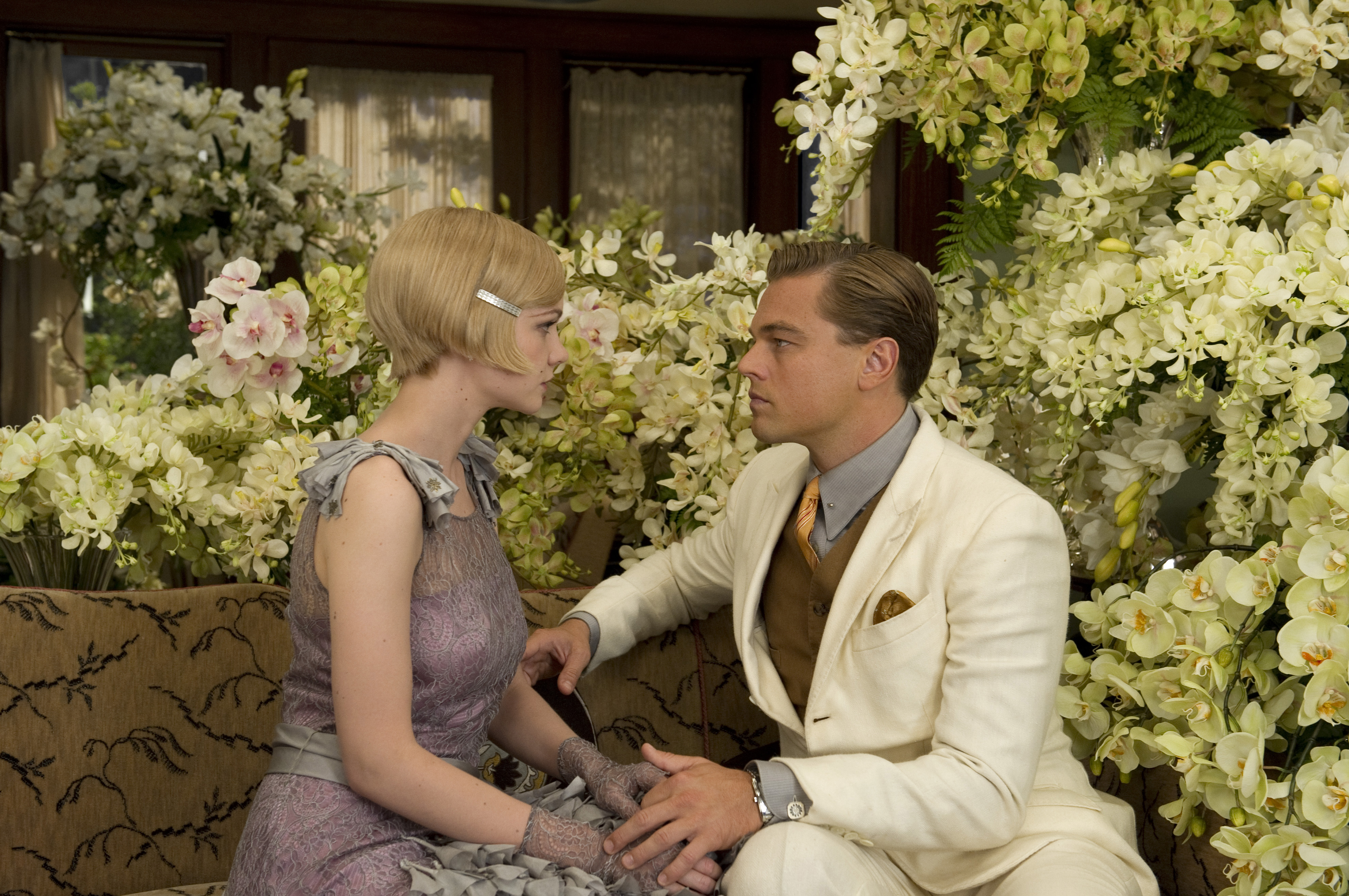My yellowed high-school paperback of The Great Gatsby runs only 182 pages. Baz Luhrmann’s lavish new 3-D adaptation demands 142 minutes to tell. I mention this because school will soon be out, and not many summer movies are made from the required-reading syllabus. Iron Man comics are a reprieve from tests and coursework. F. Scott Fitzgerald is, for most young readers, just another dead white guy writing about privileged folks with rich-people problems. I wouldn’t want to be a teacher now forcing them to read an 88-year-old novel, and I wouldn’t want to be Luhrmann, that audaciously talented Australian director, now trying to blockbusterize the property with Leonardo DiCaprio playing another golden, doomed lover. (Spoiler: He ends up face down in the pool—not quite like Titanic, but close.)
Why 3-D, why Gatsby, why now? The movie feels five years too late, after the subprime bubble burst. Though we see our narrator, Nick Carraway (Tobey Maguire), making cold calls on Wall Street, this movie doesn’t look forward to the crash of 1929. Luhrmann makes big, gaudy pictures, but he isn’t a big-picture guy. We see the proles shoveling in the Valley of Ashes, but why there’s such vast income inequality—then as now—isn’t a topic of concern. The director is interested only in love, not money. And his Gatsby (DiCaprio) only uses money as glittering lure to attract his lost love Daisy (Carey Mulligan), which requires shady deals with the gangsters he fronts for.
The 3-D seems a concession to the summer audience, the kids out of school. With his cinematographer Simon Duggan, Luhrmann flings the deep-focus bling in our face. How many champagne bottles must be uncorked and geysered? How many tons of confetti can flutter in the air? How many times can the camera pull back—by CGI trickery—and speed-zoom from West Egg to Manhattan? Even the view down Gatsby’s pier of the elusive green light of East Egg is repeated more times than I can count. Luhrmann’s devotion to the novel is admirable, but he breaks its axles with such ardor. Quoting often from the source text, Luhrmann both tells too much and shows too much. He too-muches too much.
The soundtrack, filled with anachronisms like Jay-Z and others, isn’t the problem here. I wish Luhrmann had gone entirely hip-hop, casting Beyonce and her husband as his leads in modern-day Brooklyn. In what’s still probably his best movie, Romeo + Juliet, he booted Shakespeare forward to South Beach. Period movies bog him down, and too much of Gatsby feels like Moulin Rouge!, his ponderous last success. The party scenes in Gatsby’s mansion burst with manic energy; everyone’s singing and dancing like it’s La boheme, but Fitzgerald was never so frivolous. He was a Midwestern moralist, an elegist, a sad, alcoholic poet of the Jazz Age who didn’t realize how he’d burn out with that evanescent decade. In the movie’s quieter moments (particularly the ending), Luhrmann gets that somber mood exactly right—when the party’s over and the pool fills with dead leaves and broken martini glasses. He puts Fitzgerald’s text onscreen, and it’s like the supertitles for a tragic opera.
Too bad his cast can’t sing. Mulligan probably fares the best as a miserably giddy woman no man ever listens to. (No adaptation has ever dared to flip the script and tell the story from her perspective.) As Daisy’s brutish, cheating husband Tom, Joel Edgerton gets only one fine scene, consoling the husband of a dead mistress. Playing the other man who treats Daisy badly, DiCaprio is given a grand entrance with fireworks and the pounding pulse of Gershwin. He has a gift for portraying damaged narcissists, but no amount of sepia flashbacks can fully explain this self-invented Horatio Alger hero. The more the movie explains, the less interesting he becomes. DiCaprio is lost in a feature-length Chanel ad. Maguire is Maguire, born to be a wide-eyed second banana. His Nick tells the story from 1929, but you wish for a more seasoned postwar voice—Alec Baldwin? Kevin Spacey? Stanley Tucci?—to recite those classic passages. (Maguire is all boats, not enough tide.)
Fitzgerald had only a short and not-very-productive career. Luhrmann has made only four features, beginning with 1992’s Strictly Ballroom. He, like Gatsby, is a self-created phenomenon from the provinces, an able striver and social climber. He surely must understand Gatsby’s anxious showmanship, the effort it takes to create a swooningly glamorous illusion. When his nervous hero fills Nick’s cottage with flowers for a tea date with Daisy, Gatsby touchingly asks, “You think it’s too much?” The answer, which Nick is too polite to give, is yes. And the tragedy is that Gatsby knows no other way than excess.
bmiller@seattleweekly.com
THE GREAT GATSBY Opens Fri., May 10 at Guild 45th and other theaters. Rated PG-13. 142 minutes.









